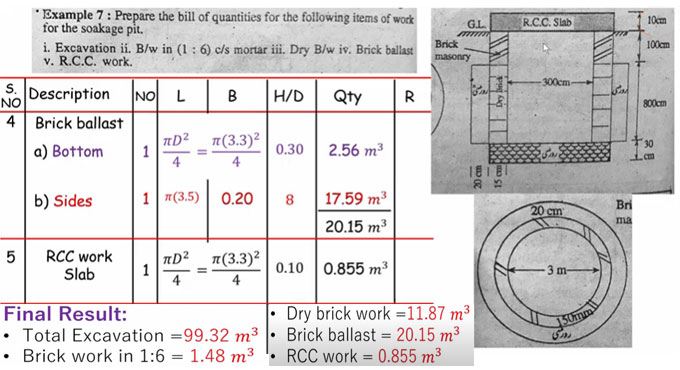NEWS | SOFTWARE | SHEET
Detailed Discussion on Bill of Quantites (BOQ)
BOQ or BQ which is the bill of quantities which is a document that is prepared by the cost consultant that provides specific measured quantities for project of the items of work which is identified by the drawings and specifications in the tender documentation.
The measurement of quantities can be according to the number, length, area, volume, weight or time. It is important for the design to be complete and the specifications prepared for the preparing a bill of quantities.
To carry out the work for a project there must be a preparation for price by the tenderers for which the bill of quantities is issued to them.
The tenderers are assisted by the bill of quantities in the calculation of construction costs for their tender, which also leads to the fact that all tendering contractors will be pricing the same quantities, instead of taking off quantities from the drawings and specifications themselves, it is important to provide a fair and accurate system for tendering.
By stating their price for every item, the contractor tenders against the bill of quantities. The tender’s offer is included in this priced bill of quantities. Since the offer is built up of prescribed items, comparison of overall price and individual items directly with other tenderers’ offers is possible. This allows a detailed assessment of which aspects of a tender may offer good or poor value. Tender negotiations are possible with this information.
Standards for Bills of Quantities
A widely recognized methodology or standard must be followed for the preparation of bills of quantities. The reason for a standard to be followed is to avoid any ambiguities or misunderstandings along with disputes which might arise as a result of different interpretations of what has been priced.
A Standard Method of Measurement used to be followed in the UK for bills of quantities for general construction works were until recently. Though in the current time, a new standard, the New Rules of Measurement has become functional on 1 January 2013 and replaced SMM7 on 1st July 2013.
The various other methods of measurements that are used for civil engineering works are for example, the Civil Engineering Method of Measurement currently in its 4th Edition (CESMM).
A standard method for categorizing works has been adopted by SMM7 adopted the Common Arrangement of Work Sections (CAWS).
Preparing Bills of Quantities
In works packages or elementally the bills of quantities can be prepared, this is done by a process known as 'taking off' that involves identifying elements of construction works which can be measured and priced.
In work sections the bills of quantities are most useful to the contractor which reflects like the sub-contract packages. With this process obtaining prices from the sub-contractors by the contractor is easier and this will most likely result in a very accurate and competitive price.
Even though the different kinds of works required must be mentioned in the bill of quantities, but there is no need to specify them as that can lead to confusion between information in the bill of quantities and information in the specification itself.
If there is any lack of compatibility between the bill of quantities and the rest of the tender documents there can be a dispute. Such as if an item is included in the drawings and specification but not in the bill of quantities, or in case of an arithmetical error.
Even though the priced bill of quantities will take precedent, it is the responsibility of the client for their own errors or omissions, this can be classified as relevant events (or compensation events) which gives rise to claims for an extension of time and loss and expense.
In case, an ambiguity or error comes to the notice of the contractor during the tender process, then the client must be directly spoken to as that is best practice, even in case where it might of some commercial advantage to them not doing so.
With time now there is an increase in the availability of software that will be able to assist in the preparation of bills of quantities.
BIM or the building information modelling system can be used to produce bills of quantities from information already contained within the model.
To get more details, go through the following video tutorial.
Lecturer: Engineer Boy


